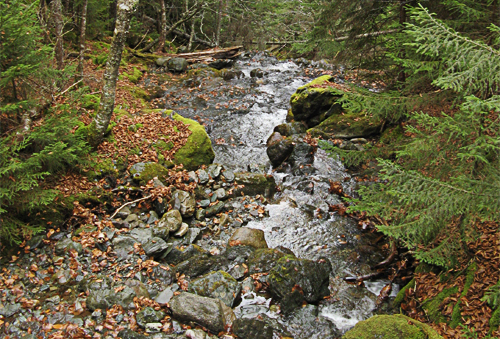Fundy National Park
|
Areas Page Editors: please follow the Guidelines, whether you are editing an in-game area or World Territory. |
On this page... (hide)
- 1. Description
- 2. Waterways
- 2.1 Bay of Fundy
- 3. History
- 4. Sources
| Credit | arobrien@Flickr |
|
General | |
| Region | Northern Tides |
| Territory | Wabanaki Coast |
| Major Waterways | Bay of Fundy |
| Size | ?? sq km / ?? sq mi |
|
Roleplay! | |
1. Description
During the time of humanity, those seeking to escape daily life frequented this park's trio of campgrounds, golf course, swimming pool, and of course, the vast number of hiking trails. Now, decades after the apocalypse, the golf course is overgrown and the campgrounds are eerie and deserted; many of the hiking trails have been swallowed by the forest. A vast array of animal and plant species dwell in this territory; fishing is an effective pursuit along the shoreline and in the park's numerous rivers and lakes.
2. Waterways
2.1 Bay of Fundy
The Bay of Fundy is a large bay of the Atlantic Ocean and part of the Gulf of Maine, separating Nova Scotia from New Brunswick. The bay has a tremendous effect on both provinces coastlines and climates. The upper part of the bay splits into Chignecto Bay in the northeast and the Minas Basin in the east, past Cape Split the Whisper Beach area.
Tides of the Bay of Fundy
The Bay of Fundy has an extreme range of tide; the highest tidal surge ever recorded occurred in the Minas Basin, a northeastern part of the bay. The water level rose 21.6 metres (70.9 feet). The tides in the Bay of Fundy are semidiurnal (tides that have two highs and two lows each day). The height that the water rises and falls to each day during these tides are approximately equal. There are approximately six hours and thirteen minutes between each high and low tide.
See the tides rise in GIF format (warning: large file).
Features of the Bay of Fundy
Much of the coastline of the bay varies with the tide. Muddy and marshy mudflats contrast against sharply-rising coastal cliffs by low tide. However, the land becomes starkly different during the high tide: the headlands and cliffs disappear, and the water rushes right up to the land.
One of the bay's unique features occurs in rivers that drain into the bay. Tidal bores are common with each change of the tide; tidal bores are "a tidal phenomenon in which the leading edge of the incoming tide forms a wave (or waves) of water that travel up a river or narrow bay against the direction of the river or bay's current."
Additionally, the Bay of Fundy is home to an interesting geologic feature, the Cape Hopewell rock formations, near Saint John. Lastly, much of the water in the Bay of Fundy -- especially within the Minas Basin and Chignecto Bay -- is brown due to large amounts of suspended silt.
3. History
- The northern portion of this area was claimed by Vinátta from May 2012 to June 2017.
4. Sources

